Alive and well

Designing sustainable buildings doesn’t always mean hi-tech solutions. From green roofs to living walls to constructed wetlands, sometimes it’s just a matter of embracing natural solutions. Lenny Antonelli investigates the emerging technologies and designs that use nature to improve the performance of buildings.
When Erik van Lennep says he wants buildings to be greener, he means it literally. “Our goal is to maximise green roof coverage in Dublin,” he says. That goal could soon be within sight, as Dublin City Council takes the first steps towards embracing green roofs.
Van Lennep, the founder of sustainability consultancy Tepui, has prepared guidelines on the types, functions and advantages of green roofs for Dublin City Council’s planners. His guidelines also recommend the introduction of a green roofs policy for the city, and the installation of green roofs on existing council buildings. “At the moment we’re just giving advice to our planning department. It’s up to them to request green roofs,” says Mairead Stack, Dublin City Council’s biodiversity officer, who along with van Lennep has been at the forefront of pushing green roofs in the city. “We’ll be strongly trying to incorporate a green roofs policy into the council’s next development plan,” she says.
Such a policy could request developers to include green roofs in certain cases. The Greater London Authority’s latest development plan demands major developments to “incorporate living roofs and walls where feasible.” In Basel, Switzerland, all new and renovated flat-roofed buildings must be greened to a depth of at least 10cm, while in the Austrian city of Linz all new flat-roofed buildings over 100m2 must include green roofs.
Green roofs aren’t a new technology. Newgrange is the earliest surviving Irish example, while in northern Scandinavia sod roofs and walls, some still surviving, have been around for centuries. The development of modern green roofs began in 1960s Germany, and it is estimated that ten per cent of the country’s flat roofs have since been greened.
There are three basic types of green roof. The extensive variety reaches a depth of 200mm, is light and easy to maintain, and features moss, sedum and grass species. Intensive green roofs can be up to 500mm deep, and the roof must often be designed specifically to support this heavier load. Regular maintenance is needed, but they can support all types of trees and shrubs, and act as true rooftop gardens. Semi-intensive green roofs sit in between; they require moderate structural support, and are limited to shrubs, perennials and grasses. German company Bauder has been supplying both extensive and intensive green roof systems to the Irish market for many years, including landmark eco buildings featured in previous editions of Construct Ireland such as Navan Credit Union, Daintree, and Mater Orchard, to name but a few.

The sand roof of the Okowerk Environmental Centre in Berlin was built in the 1890s, and is now colonised by mosses and lichens

The moos filtration plant near Zurich in Switzerland features nine acres of extensive roof meadow that supports 175 different plant species, including rare green-winged orchids
The basic components of most green roofs are the same: a frame to hold the soil in place (often made of timber), a waterproof membrane, root barrier layer, drainage zone, growing substrate, and vegetation.
Some modern examples of green roofs are striking. The Acros building in Japan’s Fukuoka city features a series of terraced green roofs that reach 60 metres in height, merging seamlessly with an adjacent park at ground level, while Ford’s River Rouge factory complex in Michigan boasts ten acres of ‘living’ roof - the world’s largest - designed by noted green architect William McDonough.
But green roofs are more than an architectural statement designed to green the grey urban environment. They offer impressive practical benefits too, such as drastically reduced rainwater runoff, increased urban biodiversity and impressive insulation performance. They also provide green space in dense urban areas, and help to cool local temperatures. “They tick all the boxes,” Mairead Stack says.
As global temperatures rise, green roofs can play a key role in mitigating the effects of climate change in urban areas, where artificial surfaces absorb heat and buildings dominate the skyline, raising local temperatures above those in the surrounding countryside (the urban heat island effect). By evaporating water and absorbing less heat, green roofs reduce local temperatures. The surface temperature of Chicago city hall’s green roof can be as much as 44oc cooler than conventional roofs nearby, while in Toronto researchers concluded that if all possible roof space in the city were greened, it would lead to a 0.5 – 2.0oc reduction in city temperatures.
Greening a roof can affect temperatures within buildings too: a green roof can reduce summer temperatures underneath the roof membrane by 15oc and raise winter temperatures by 2.5oc, according to a study conducted at the University of Nottingham.
From an engineer’s perspective, the ability of green roofs to reduce rainwater runoff is impressive: research carried out in the temperate Pennsylvania climate concluded that an extensive green roof can reduce runoff by up to 100 per cent in summer and 30 per cent in winter.
Green roofs can also neutralise acid rain and sequester carbon. “We’ve tested a typical sedum roof, and the amount of carbon sequestered is small,” Brad Rowe, associate professor of horticulture at Michigan State University told Construct Ireland. “It’s comparable to desert scrub. But if you have something deeper it’ll have more biomass, and it’ll sequester much more. Even with a sedum mat though, it’s more than is sequestered on a typical roof.”
With the principles of sustainable drainage systems (SuDS) - including the demand that runoff in new developments should not exceed that of a typical greenfield site - enshrined in the development plans of every local authority in the greater Dublin area, green roofs could soon become a common facet of new developments in the city. “The most practical way of meeting the requirements of SuDS in a high density area is to use a green roof,” says Don McEntee, senior engineer with Dublin city council, though he says that permeable paving is another viable option.

An extensive green roof in Freiburg, Germany features an array of Solar PV cells. Green roofs assist solar PV technology by cooling rooftop temperatures. Overheating is a key reason for inefficiencies in PV technology

The green roof on law firm Allen & Overy's London headquarters
McEntee says that green roofs can have a positive effect on local water quality too. In Dublin, roof drainage systems carry water directly into the sewage network. When the sewers fill during heavy rainfall, diluted raw sewage flows into the Liffey. Because green roofs absorb so much rainfall, they ease pressure on sewage systems and reduce overflow into local rivers.
Intuitively, green roofs can boost biodiversity in urban areas. Environmental consultant Dusty Gedge says that his interest in green roofs developed from his work on bird conservation in London. “I was working on the conservation of the black redstart, and I thought, why don’t they just put the habitat on the roof?” says Gedge, who estimates that between existing green roofs and planned future ones, there will soon be 700,000 square metres of green roof in London.
With a background in biodiversity, Gedge isn’t a fan of homogenous sedum mats. “The construction industry is very mechanistic. It likes everything to be the same, whether it’s paving or bricks…a green roof is essentially a landscape. If you’re building a green roof near the Burren, the Burren should essentially be the green roof at land level.”
Mairead Stack says that Dublin City Council is also examining the concept of biodiverse roofs, on which a material such as gravel or concrete is laid at varying heights to create a diverse topography that replicates brownfield sites. “Brownfield sites have one of the highest biodiversities. You get a whole lot of very rare plant and insect species,” she says.
Green roofs are compatible with other sustainable rooftop technologies, such as solar thermal arrays and rainwater harvesting systems, and green roofs can even improve the performance of solar photovoltaic (PV) systems: by reducing localised temperatures they prevent PV panels from overheating, an often-cited reason for inefficiencies in PV technology.
Clearly green roofs boast an impressive list of benefits, but are they cost effective? While additional materials and labour can add up to 30 per cent to the cost compared to a conventional roof, this can be offset by savings from reduced energy consumption and roof maintenance. By sheltering roof materials from the weather, green roofs can double or even treble their lifespan, according to research from Penn State University.
Dusty Gedge believes that attitudes towards green roofs are changing: “Six years ago nobody talked about climate change, and now people are interested in the urban heat island effect, energy performance, storm water attenuation and growing food on green roofs,” he says.
While green roofs are growing in popularity, their vertical equivalent has some catching up to do. Perhaps the most famous green walls are those gracing Parisian streetscapes, designed by French botanist Patrick Blanc. In Paris, subsidies are available for residents to install green walls on building facades. The city authorities even look after maintenance. “They don’t have any more places to green on the ground, so they’re going up the walls,” van Lennep says.
Outdoors, there are two types of green wall. Common green facades are facilitated with simple trellising. In other cases, vegetation is rooted in soil or an inorganic growing medium, often in pre-vegetated panels that are installed over the building structure. “These are highly engineered systems,” van Lennep says.
Like green roofs, green walls offer practical benefits: they create a dead air space that provides thermal insulation, cut down daily temperature fluctuations at the wall surface by up to 30oc, and reduce wind chill by up to 75 per cent (with a knock-on reduction in heating demand of up to 25 per cent). They also remove pollutants from the air, help to counter the urban heat island effect and sequester carbon.

A stand-alone living wall in the Millennium Park, London
It’s not just outdoors that you find green walls though. Van Lennep says that ‘active’ green walls can help to improve indoor air quality by removing pollutants. “They’re hooked up to an air handling system. Fans circulate air around the building and push it through the padded roots, and that scrubs the air,” he says.
Green roofs and walls are just one way in which biology and engineering combine to make buildings more sustainable. Constructed wetlands are another. Essentially artificial marshes, constructed wetlands are a low-energy method of treating wastewater, sewage, or effluent from industry or agriculture.
Vegetation in the wetland acts as a substrate on which micro-organisms grow, breaking down organic matter. Combined with natural chemical processes, this removes 90 per cent of pollutants from the water. The plants themselves remove seven to ten per cent of pollutants, and absorb nutrients such as nitrogen and phosphorus. As different aquatic plants take up nutrients and heavy metals at different rates, a constructed wetland is designed specially for the type of wastewaster it’s treating.
There are two basic types: subsurface flow wetlands, where effluent flows through a gravel or sand medium in which wetland plants are rooted, and surface flow wetlands, in which effluent moves above the soil in a planted marsh or swamp. Living machines, a variation of constructed wetlands, are highly engineered systems in which wastewater is remediated as it is pumped through a series of tanks, each a unique microhabitat designed to treat specific elements of the wastewater stream. In temperate climates, living machines are often kept in greenhouses to maintain the temperatures needed to stimulate biological activity.
Dublin’s only constructed wetland in the Tolka Valley Park treats water from the heavily polluted Finglaswood stream before it enters the Tolka river. To ensure the system is effective throughout the year, the wetland is planted with a selection of species that exhibit a variety growing seasons. “We’re trying to get three more (constructed wetlands) up and running in Dublin,” McEntee says.
Dublin City Council is looking at innovative wetland projects pioneered by other local authorities. Thirteen farms around the village of Dunhill in County Waterford have developed wetlands, and water quality in a local river has dramatically improved. “Ten years ago the Anne river was totally polluted. Now sea trout are swimming back up,” McEntee says.


Some examples of renowned French botanist Patrick Blanc’s living walls abroad include (top) the Musée du quai Branly in Paris; (above) le Mur Vegetal at Melbourne Central, Australia; and (below) the BHV Homme fashion store, also in Paris

The village of Glaslough in Monaghan has taken things further, treating its sewage effluent with a wetland system. Wastewater flows through four ponds sequentially before being monitored in a fifth pond. “It does a better job than a conventional wastewater treatment because it will remove things like hormones that conventional treatment can’t. You get a cleaner effluent from a wetland than from wastewater treatment,” McEntee says.

A natural brise soleil shelters the south-face of local authority offices in Ardee, County Louth, from the sun, mitigating glare and overheating
With leaking septic tanks being partly responsible for widespread pollution in Irish waterways, the potential for constructed wetlands is obvious, particularly in rural areas where the cost of bringing conventional sewage treatment is often prohibitive. So why are there so few?
“There’s total scepticism around it,” McEntee says. “The only way to get over that is to champion a project and prove that it does work. Take Glaslough for example, it had 40 per cent of the construction cost of a conventional treatment plant, and has 5 to 10 per cent of the running costs. It needs virtually no power either, so from a carbon footprint point of view, it’s very good.”
One worry for hydrologists is that contaminated water can leak through the clay lining of a constructed wetland. McEntee doesn’t see this as a problem. He says that as organic material settles out in a wetland, it forms a natural seal in the pores of the clay lining that prevents contaminated water seeping out.
McEntee acknowledges that constructed wetlands aren’t flawless though. “The biggest downside is the amount of land required,” he says. Constructed wetlands generally require more land than conventional systems, though they can be developed on most land types and so needn’t necessarily compete with agriculture for fertile land. Nonetheless, the extra space requirements of constructed wetlands can be justified on the basis that they can provide amenity value. Many developers include water features instead of green spaces for housing schemes on the basis that it attracts buyers. A well-designed constructed wetlands can fulfil this function whilst also reducing environmental impacts and providing a home for flora and fauna to thrive.
Constructed wetlands are an example of the emerging discipline of ecological engineering. But embracing living technologies doesn’t necessarily require such complex systems; sometimes it’s just a matter of planting trees in the right place. In May, Construct Ireland profiled new green-roofed local authority offices in Ardee, County Louth. The building’s designers also planted trees between the south-facing glazed area of the building and an open park, creating a natural brise soleil that prevents glare and overheating in the summer months.
Smart planting can make an impressive difference to building performance. Planting deciduous trees on the south side of a building provides shading during the summer and allows maximum solar gain in winter. On the north side, evergreen trees will deflect cold winter winds. Ireland’s mild climate supports an extensive array of plants species, with a wide range of seasonalities, enabling architects and designers to create tailored landscapes and improve the performance of a building based on local conditions.

the Noorder Zoo at Emmen, Netherlands, host to 1,500,000 visitors annually. A Living Machine system at the zoo treats 220,000 gallons of wastewater per day, generated by visitors and the maintenance of the housed animals.
July’s issue of Construct Ireland profiled self-builder Colman McSweeney’s low energy poroton house in Hollywood, County Wicklow. The house is exposed to two prevailing winds; existing trees shelter it from a northerly wind, but it’s also exposed to a strong south-easterly that emerges from the Wicklow gap. During thermal imaging tests, sheltered parts of the external envelope were visibily warmer than exposed elements. McSweeney intends to divert the south-easterly wind by planting fruit trees. “If we get the microclimate around the building correct with intelligent planting, it’ll save even more energy,” he told Construct Ireland.
Smart landscaping – just like green roofs and walls, and constructed wetlands – is a clever, low energy and natural solution that can make our buildings more sustainable, and, quite literally, greener.
- Articles
- Design Approaches
- Alive and well
- green roof
- Constructed Wetlands
- Urban Biodiversity
- Smart Landscaping
Related items
-
 Steeply sustainable - Low carbon passive design wonder on impossible Cork site
Steeply sustainable - Low carbon passive design wonder on impossible Cork site -
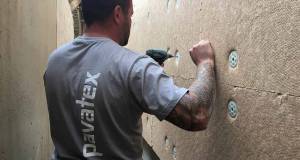 Focus on whole build systems, not products - NBT
Focus on whole build systems, not products - NBT -
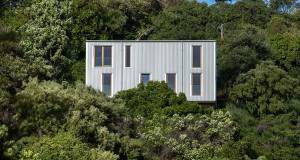 International - Issue 29
International - Issue 29 -
 Passive Wexford bungalow with a hint of the exotic
Passive Wexford bungalow with a hint of the exotic -
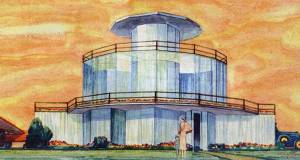 The House of Tomorrow, 1933
The House of Tomorrow, 1933 -
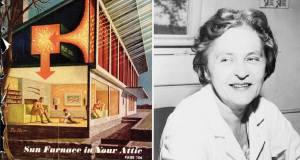 1948: The Dover Sun House
1948: The Dover Sun House -
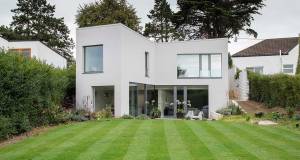 The dazzling Dalkey home with a hidden agenda
The dazzling Dalkey home with a hidden agenda -
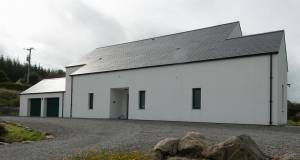 Mayo passive house makes you forget the weather
Mayo passive house makes you forget the weather -
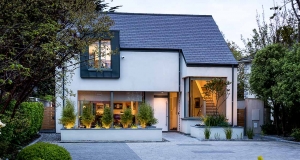 A1 passive house overcomes tight Cork City site
A1 passive house overcomes tight Cork City site -
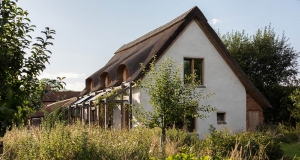 Norfolk straw-bale cottage aims for passive
Norfolk straw-bale cottage aims for passive -
 Time to move beyond the architecture of the oil age
Time to move beyond the architecture of the oil age -
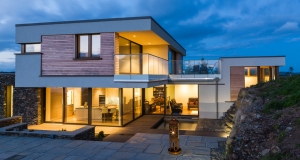 West Cork passive house raises design bar
West Cork passive house raises design bar

